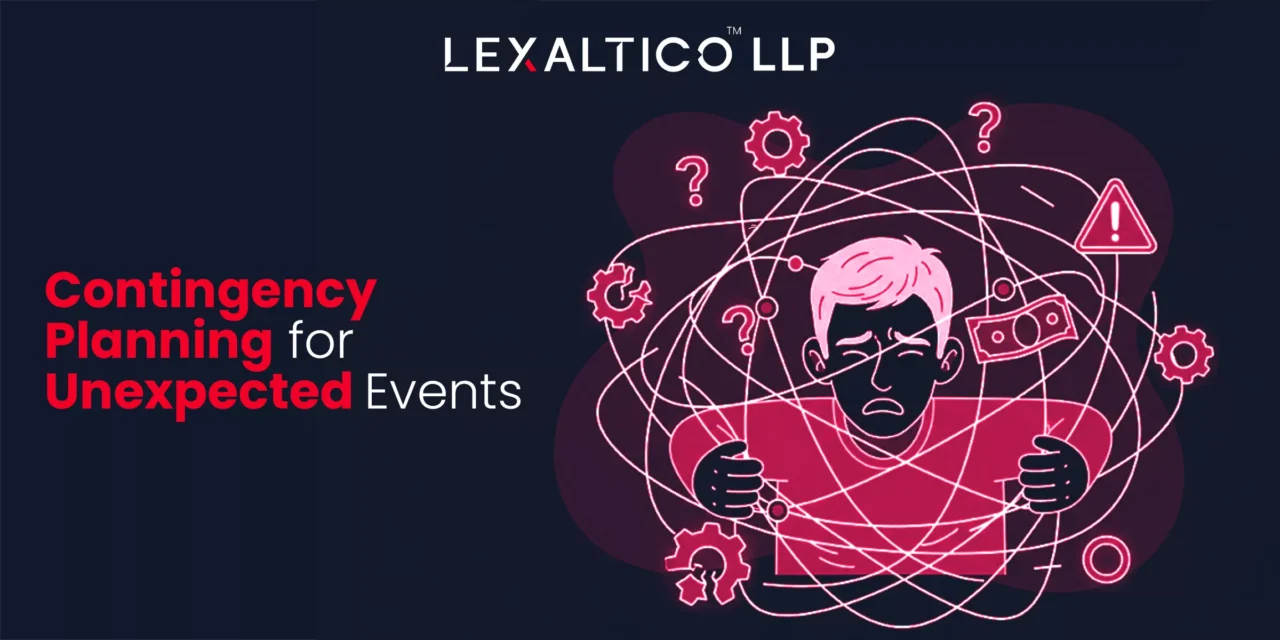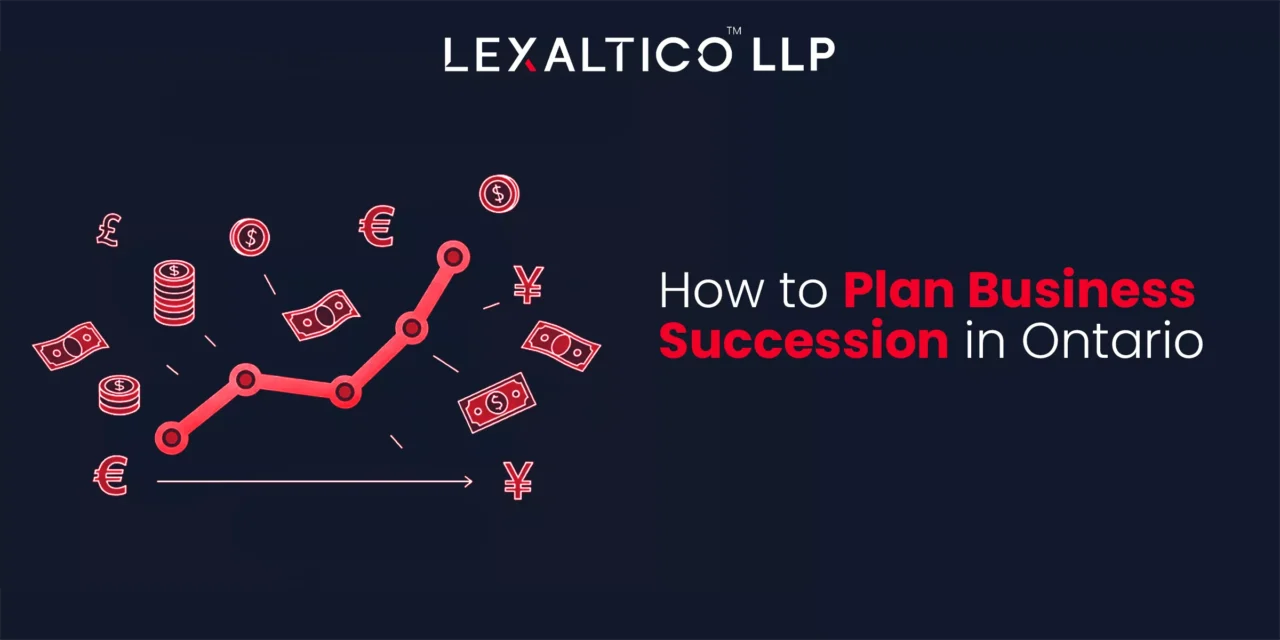You own a business in Ontario. You’ve poured blood, sweat, and tears into building it. But what happens when you decide to retire, move on, or when something completely unexpected happens?
That’s where business succession comes in.
Succession planning isn’t just about handing over the keys. It’s about preserving your legacy, protecting your employees, and maximizing value. Failing to plan before can lead to operational disruption, family conflict, and steep tax bills.
In short, if you’re serious about your business continuity, you’ll take business succession planning seriously.
Top Mistakes Ontario Business Owners Make When Planning Business Succession

Most of business owners think, “I’ll deal with this later,” when it comes to planning business succession. Well, that is a big mistake.
Here are some common missteps that people often take:
- Waiting too long and leaving inadequate time to groom a successor.
- Failing to document the plan and legal tools, which cause confusion or disputes.
- Ignoring tax implications (e.g., capital gains, inclusion rules, estate freeze opportunities).
- Over-relying on a family member who may not be ready or willing.
- No “Plan B” for a sudden disability or death.
By recognising these early, you avoid the potholes.
Set Your Exit Vision & Timeline
Defining Your Personal Goals and Legacy
First things first: Ask yourself what you want to achieve.
- Do you want to retire fully, or stay involved as a mentor?
- Do you want the family to take over or sell to a key employee?
Your personal goals will shape your succession strategy. When you clarify your legacy, what you built and what you want to leave behind, it gives your planning a compass.
Choosing the Right Timing for Transition
When it comes to transitioning, the earlier you begin, the smoother the process. Some advisors recommend starting 3-5 years before your actual exit.
Think about business cycles, market conditions, and your personal readiness. Timing affects valuation, tax outcomes, and how smoothly leadership transitions. Planning ahead saves major headaches later.
Identifying & Selecting a Successor in Ontario
Family Successor vs Management vs External Buyer
Choosing a successor is one of the biggest decisions you’ll make. You basically have three broad paths:
- A family successor: great for legacy, if they’re ready.
- A management or internal successor: offers strong continuity but may need structured training.
- An external buyer: simplifies family dynamics but could change business culture.
Each option comes with different legal and tax implications; choose what best fits your business and personal goals.
Recognizing Skills Gaps & Training Needs
Even the best chosen successor may have gaps in experience, leadership, or technical know-how. That’s where a management transition plan comes in:
Identify gaps early, create a development plan with milestones, and give real responsibilities while you’re still active in the business. This isn’t optional; it’s crucial for a smooth hand-off.
Legal Tools & Documentation for Business Succession in Ontario
Buy/Sell and Shareholder Agreements
A buy-sell agreement sets out how ownership will transfer (to family, management, or outside) and at what price.
A shareholder agreement handles conflicts, rights, roles, and exit scenarios. Without them, a transition can turn messy fast. These agreements define ownership rights, triggers, and valuation methods.
Estate Freeze and Formal Tax Agreements
To manage taxes and control ownership, many Ontario business owners use an estate freeze, it locks in today’s business value and shifts future growth to the next generation. Alongside this, vendor financing agreements, loans, trusts, and formal documentation safeguard the strategy, clarify rights and solidify governance.
Business Valuation and Tax Implications in Ontario
Fair Market Value, Capital Gains Tax & Inclusion Rules
Valuation matters because it defines the fair market value of your business, what it’s worth today and what your successor pays or inherits. You’ll want an independent business valuation. That ties into tax: when you dispose of shares, capital gains tax and inclusion rules kick in. Without early planning, you could trigger significant capital gains taxes.
Tax-Efficient Strategies: Estate Freeze, Vendor Financing, Loans
To minimize tax exposure, you can use these strategies:
- Estate freeze: as above, shift future growth.
- Vendor financing: you sell to your successor, but finance part of the deal, easing cash-flow burden.
- Loans and trusts: can defer taxes, split income, protect assets. Timing and governance are important, get the tax advisor involved early.
Management Transition & Governance Structures
Creating a Succession Plan for Management Transfer
Ownership transfer is only half the story. The business must keep running smoothly: operations, leadership, and decision-making all must transition.
A management transition plan outlines when roles shift, what training is needed, and how to minimize disruption. It should also define the outgoing owner’s role (if any) during the transition.
Governance, Boards, and Internal vs. External Successors
As you transition, consider your governance structure: a board of directors, advisory board, or non-family executives can help. Whether you pick an internal or external successor will affect governance. Setting clear accountability, reporting lines, and governance policies protects both the business and your legacy. A family business especially benefits from structured governance to avoid conflicts.
Contingency Planning for Unexpected Events

Life happens, and it is quite unpredictable. What if the successor is suddenly incapacitated or declines the role? What if market conditions change and you need to exit sooner?
A strong succession plan includes a Plan B: an alternate successor or buyer, key-person insurance, disability clauses, and an emergency protocol. Most lawyers highlight this as essential.
Integrating Your Succession Plan with Estate Planning
Why Estate Planning Matters for Ontario Business Owners
Your business is likely one of your largest estate assets. How you handle it affects your will, heirs, and tax obligations.
By integrating your business succession plan with your estate plan, you align your personal legacy goals with your business exit strategy. Law firms emphasise estate planning as part of the whole package.
Monitoring, Reviewing & Updating Your Succession Strategy
Your plan is not ‘set and forget’. Businesses evolve, markets shift, and family dynamics change. Review your plan annually (or every two years) to adjust exit timelines, successor readiness, legal documents, and tax strategies. Communication is key, so bring your advisors and your successor into the loop.
Taking Action Today for Tomorrow’s Success
Planning your business succession in Ontario may seem like a heavy lift, but the payoff is worth it. You get smooth continuity, legacy protection, tax savings and peace of mind.
Start early, set your vision, choose your successor, assemble your legal and tax team, document everything, integrate estate planning, and include contingency plans. Your business deserves to go long after you step away, and you deserve to reap the fruits of your hard work.
Quick FAQs
Ideally, start planning at least three to five years before your intended exit. Early planning allows enough time to prepare successors, manage taxes, and protect your legacy.
Key documents include a shareholder agreement, buy-sell agreement, and an updated will. These ensure a smooth ownership transfer and protect all parties involved.
Assess skills, commitment, and cultural fit before making a decision. The best successor understands your business values and can maintain long-term stability.
An estate freeze locks in your business’s current value and shifts future growth to the next generation. It’s useful when transferring ownership while minimizing capital gains tax.
A professional business valuation determines fair market value based on assets, earnings, and market conditions. It ensures a fair price for both the owner and the successor.
Capital gains tax and inclusion rules can significantly affect proceeds from a sale. Proper tax planning helps reduce liabilities and preserve family wealth.
It should outline training, leadership timelines, and key responsibilities. The plan ensures business continuity and reduces operational disruption during the handover.
A contingency plan identifies alternative successors or buyers. This keeps the business stable even if the original plan falls through.
Yes, plans can be updated as circumstances change. Reviewing your strategy regularly ensures it stays relevant to your goals and business needs.
Estate planning aligns personal wealth transfer with your business transition. It helps minimize taxes and ensures your family’s financial security after succession.
Disclaimer: The information provided in this blog is for general informational purposes only. For professional assistance and advice, please contact experts.



